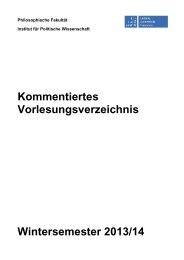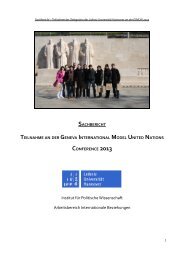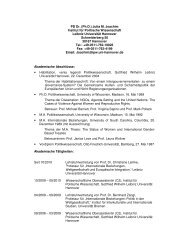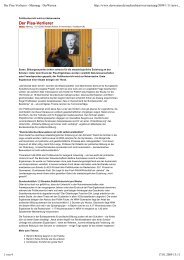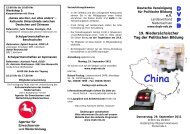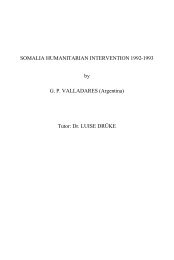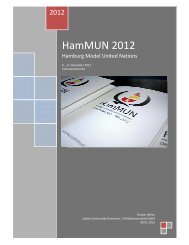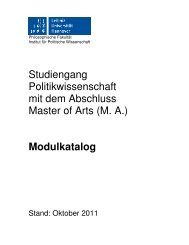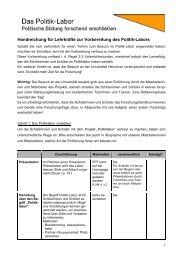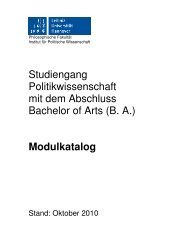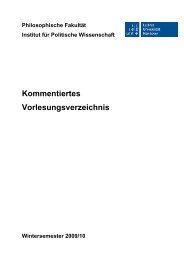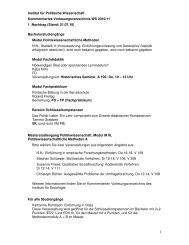Preventive Action for Refugee Producing Situations
Preventive Action for Refugee Producing Situations
Preventive Action for Refugee Producing Situations
Create successful ePaper yourself
Turn your PDF publications into a flip-book with our unique Google optimized e-Paper software.
22 Chapter 1<br />
the consequences instead of the fighting <strong>for</strong>ces. Such conflicts can be<br />
exploited to support, <strong>for</strong> example, a governmental decision to relocate<br />
whole segments of its population from one area of the country to another,<br />
or to justify new policies. Even without the pretext of protecting national<br />
security or territorial integrity, governments have engaged in severe abuses<br />
of the human rights of their citizens, making flight the only escape or hope<br />
<strong>for</strong> survival.<br />
In situations of massive population flows, the individual determination<br />
of refugee status by the Office of the United Nations High Commissioner<br />
<strong>for</strong> <strong>Refugee</strong>s (UNHCR) has become difficult and impractical; it is replaced<br />
by recognizing new arrivals prima facie as persons of concern to UNHCR.<br />
A large majority of refugees seeking shelter from general armed violence<br />
and war rather than from individual persecution are often called<br />
"humanitarian refugees". This category often remains unprotected under<br />
codified international law as they usually do not qualify <strong>for</strong> Convention<br />
refugee status. 4 <strong>Refugee</strong>s have been defined according to the following<br />
instruments, which spell out the scope of the mandate of the Office of the<br />
United Nations High Commissioner <strong>for</strong> <strong>Refugee</strong>s and define the term<br />
"refugee": The Statute of the Office of the United Nations High<br />
Commissioner <strong>for</strong> <strong>Refugee</strong>s, 5 the Convention Relating to the Status of<br />
<strong>Refugee</strong>s of 28 July 1951 [hereinafter 1951 UN Convention], 6 the Protocol<br />
Relating to the Status of <strong>Refugee</strong>s of 31 January 1967, 7 the OAU<br />
Convention of 10 September<br />
_______________________<br />
4 See Kay Hailbronner, "Non-Refoulement and Humanitarian <strong>Refugee</strong>s: Customary<br />
International Law or Wishful Thinking?" Virginia Journal of International Law,<br />
26, No. 4 (1986), p. 857.<br />
5 Chapter II A defines as a refugee: i) Any person who has been considered a<br />
refugee under the Arrangements of 12 May 1926 and of 30 June or under the<br />
Convention of 28 October 1933 and 10 February 1938, the Protocol of 14<br />
September 1939 or the Constitution of the International <strong>Refugee</strong> Organization,<br />
ii) Any person who, as a result of events occurring be<strong>for</strong>e 1 January 1951 and<br />
owing to a well-founded fear of being persecuted <strong>for</strong> reasons of race, religion,<br />
nationality or political opinion, is outside the country of his nationality..."<br />
6 The 1951 UN Convention defined refugees in its Article 1 according to four<br />
characteristics: (1) They are outside their country of origin; (2) they are unable or<br />
unwilling to avail themselves of the protection of that country, or to return there;<br />
(3) such inability or unwillingness is attributable to a well-founded fear of being<br />
persecuted; and (4) the persecution feared is based on reasons of race, religion,<br />
nationality, membership or a particular social group, or political opinion. See<br />
Guy S. Goodwill-Gill, The <strong>Refugee</strong> in International Law (Ox<strong>for</strong>d: Ox<strong>for</strong>d<br />
University Press, 1983), p. 13.<br />
7 Given its various limitations, the 1951 UN Convention definition only covered<br />
Introduction 23<br />
1969 governing the specific aspects of refugee problems in Africa<br />
[hereinafter referred to as 1969 OAU Convention], 8 and the Declaration<br />
of Cartagena of 1984. 9 Many of the refugees who are currently crossing<br />
international borders do not satisfy requirements <strong>for</strong> refugee status under<br />
the 1951 UN Convention. There<strong>for</strong>e, the term "refugee" is used here in a<br />
broad sense, to include not only those falling into the categories defined<br />
in these instruments but also those involuntarily uprooted from their<br />
homes. Our definition of "refugee" includes all <strong>for</strong>ced movements across<br />
borders (excluding victims of natural disasters) and other displaced<br />
persons having suffered massive human rights abuses by government or<br />
other <strong>for</strong>ces, who are unable to rely on the protection of their<br />
governments, and who <strong>for</strong> not falling under existing legal categories,<br />
cannot be adequately protected by any existing body. Bodies <strong>for</strong><br />
responding to refugee situations have been in existence since 1921,<br />
beginning with the League of Nations High Commissioner <strong>for</strong> <strong>Refugee</strong>s.<br />
Institutions such as the Nansen Office and the International <strong>Refugee</strong><br />
Organization are predecessors of the current Offices of the U.N. Relief<br />
and Work Agency <strong>for</strong> Palestinian <strong>Refugee</strong>s in the Near East and of the<br />
refugees produced be<strong>for</strong>e the event of 1951. Many states relied upon<br />
Recommendation E of the Final Act of the Conference of Plenipotentiaries<br />
that states should apply the Convention beyond its contractual scope to<br />
other refugees within the territory in the case of refugees produced by<br />
events after 1 January 1951. The 1967 Protocol expressly removed the<br />
temporal limitation. Sec Goodwin-Gill, 1983, ibid., p. 13.<br />
8 The OAU Convention of 1969 covers persons who, "owing to external<br />
agression, occupation, <strong>for</strong>eign domination or events seriously disturbing<br />
public order in either part or the whole of his country...".<br />
9 The Cartagena Declaration of 1984 acknowledges UNHCR's competence<br />
in Central America. It was the first step to fill the gap between the Central<br />
American reality and the applicability of existing refugee instruments.<br />
Although it was adopted unanimously, it is not a <strong>for</strong>mally binding legal<br />
instrument, but rather indicates the political will of the member states to<br />
follow certain practices. In addition to the provisions in the 1951<br />
Convention and the 1967 Protocol, the Cartagena Declaration is to cover<br />
"persons who have fled their country because their lives, safety or freedom<br />
have been threatened by generalized violence, <strong>for</strong>eign aggression, internal<br />
conflicts, massive violations of human rights or other circumstances which<br />
have seriously disturbed public order." "Asylum and Protection in Latin<br />
America: the Cartagena Declaration of 1984," Dossier, <strong>Refugee</strong>s (Geneva:<br />
UNHCR, October 1987), p. 32.



